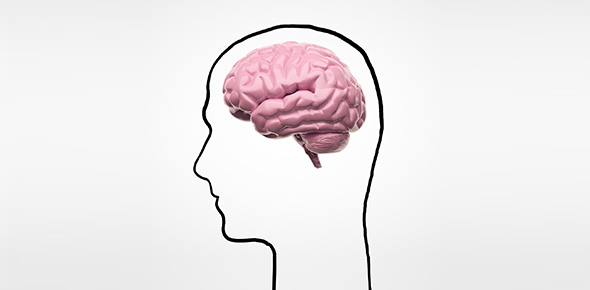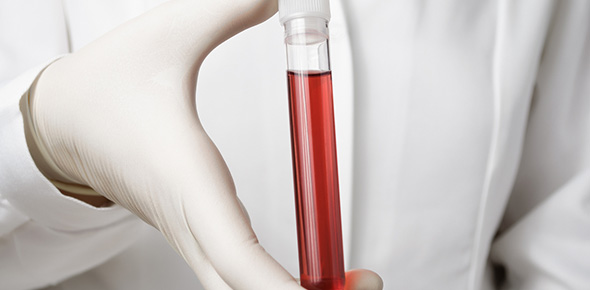Related Flashcards
Related Topics
Cards In This Set
| Front | Back |
|
Elbow Joint
|
3 joints within one capsule:
1. Humero-ulnar
2. Humero-radial
3. Proximal Radio-Ulnar
|
|
Humero-ulnar Joint
|
-Articulation of trochlea of humerus with trochlear notch of ulna
-Modified sellar joint
-Allows flexion/extension
|
|
Humero-radial Joint
|
-Articulation of the concave proximal surface of the radial head with the convex surface of the capitulum of the humerus
-Ovoid joint
-Allows flexion/extension, and pronation of radius -> pronation/supination
|
|
Proximal Radio-ulnar Joint
|
-Articulation of the periphery of radial head with the fibro-osseous ring formed by radial notch of ulna and annular lig.
-Periphery of radial head presents modified convex surface
-Radial notch of ulna presents concave surface
-Allows radial head to turn/spin/rotate --> Pronation/Supination
|
|
Distal Radio-ulnar Joint
|
-Associated with Proximal Radio-ulnar Joint
-Articulation of convex peripheral surface of ulnar head with concave surface of ulnar notch of radius
|
|
Articular Capsule of Elbow
|
-Typically thin, lined with synovial membrane
-Envelopes humeroulnar, humeroradial, and proximal radioulnar joints
|
|
Valgus
|
Joint is displaced in medial direction, the distal end of the limb is lateral relative to the position of the joint
Typically~15 degrees
|
|
Varus
|
Joint is displaced in lateral direction, the distal end of the limb is medial relative to the position of the joint
|
|
Elbow Capsular Ligaments
|
Medial Collateral Lig:
Anterior Fibers
Posterior Fibers
Transverse Fibers
Lateral Collateral Lig
Radial Collateral Lig.
Lateral Ulnar Collateral Lig.
|
|
Anterior Fibers of Medial Collateral Ligament
|
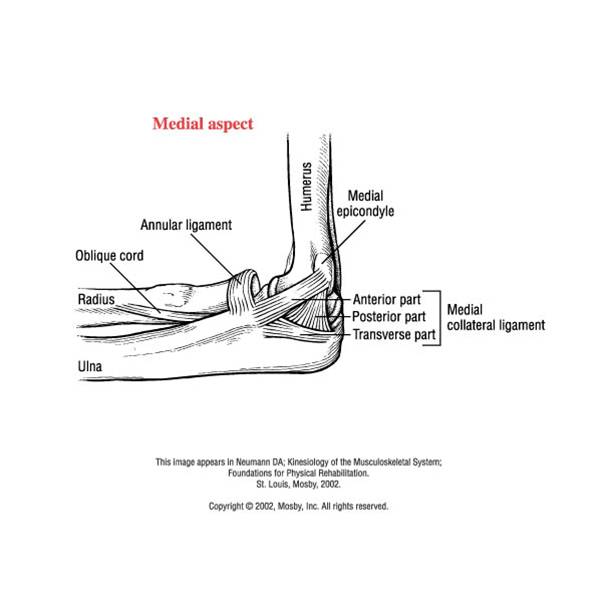 -From ant aspect of med humeral epicondyle to medial aspect of coronoid process -Strongest, stiffest band -Most fibers tight in full extension -Some stability |
|
Posterior Fibers of Medial Collateral Ligament
|
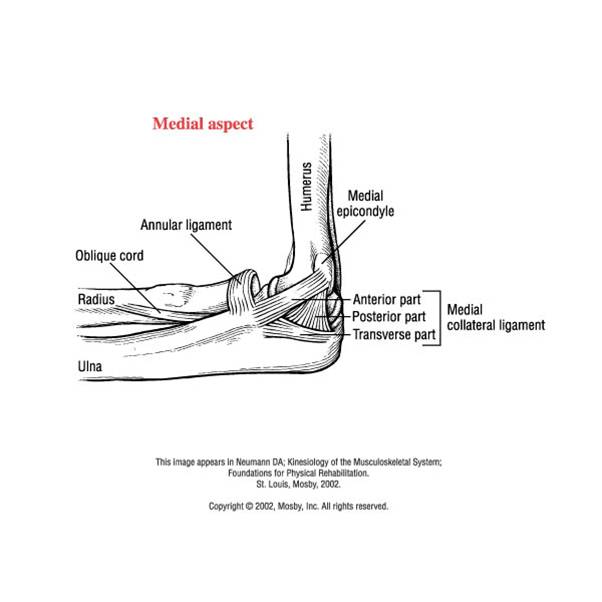 -From post aspect of medial humeral epicondyle to medial surface of olecranon -Tight in extreme elbow flex -Reists valgus stress |
|
Transverse Fibers of Medial Collateral Ligament
|
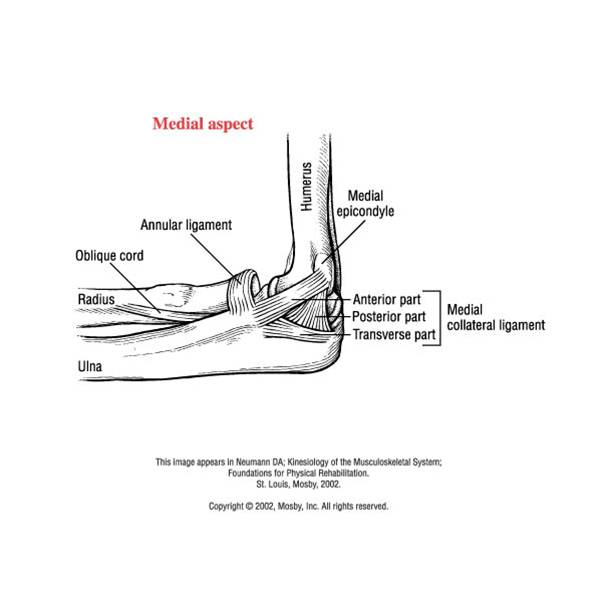 -From olecranon process to coronoid process -Little stability |
|
Radial Collateral Ligament
|
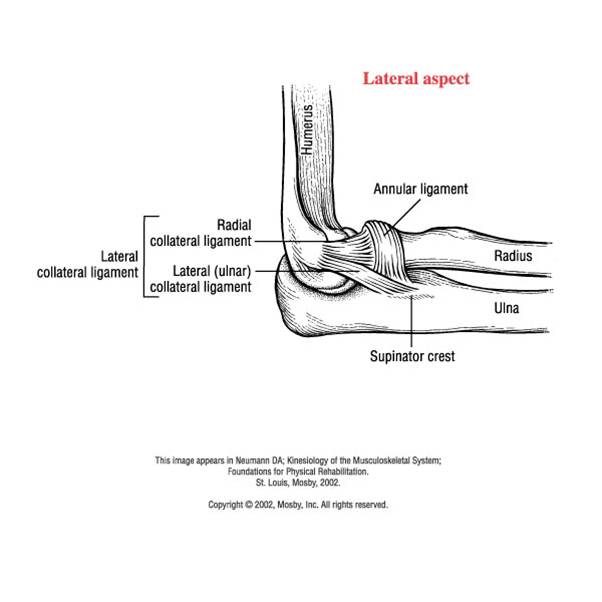 -From split of Lateral Collateral Ligament -Fibers blend with Annular Ligament |
|
Lateral Ulnar Collateral Ligament
|
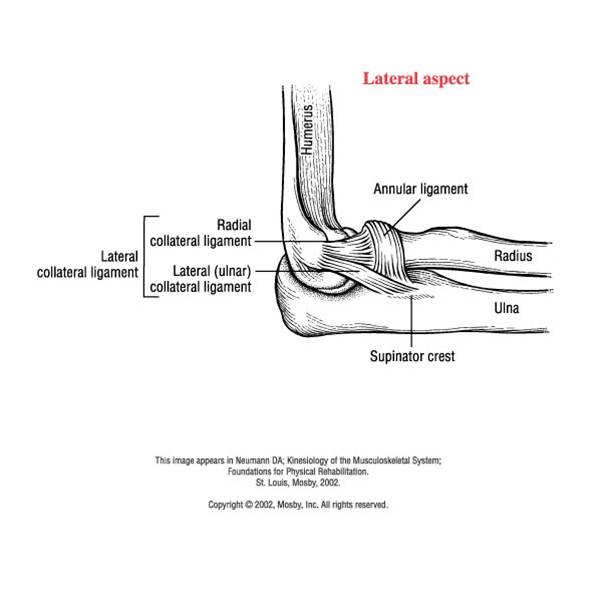 -From split of Lateral Collateral Ligament -Fibers attach to supinator crest of ulna -All resist varus force |
|
Interosseous Membrane
|
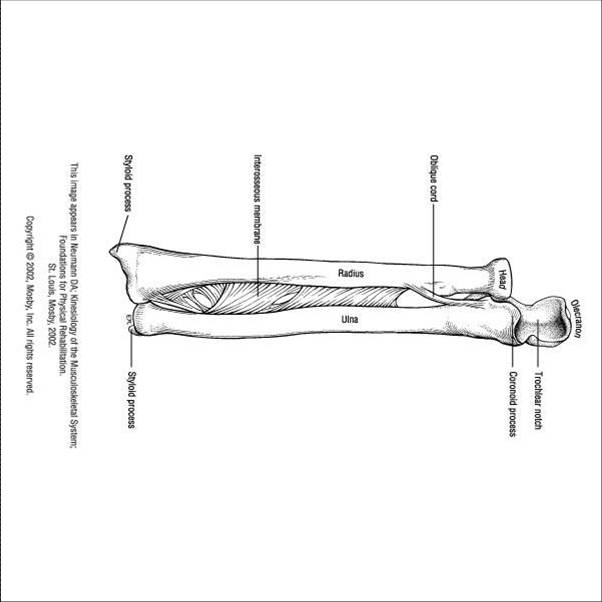 -Fibrous CT membrane that connects interosseous borders of radius and ulna -Connects without limiting pronation and supination -Provides SA for muscle attachment -Collage bundles directed distal/medial from radius to ulna allows for transfer of forces from radius to ulna and hand-radius-ulna-humerus -Maintains relationship between radius and ulna |



